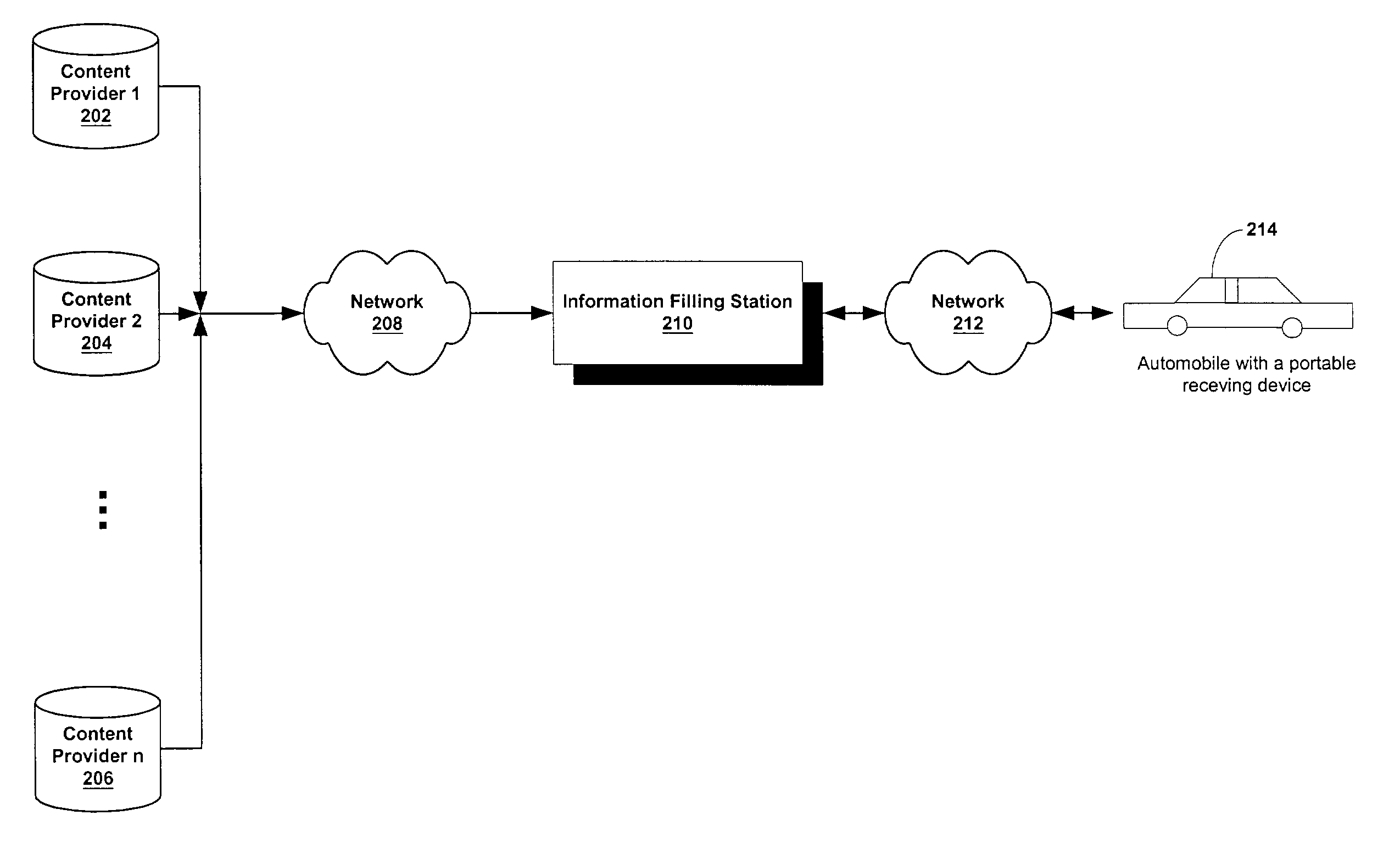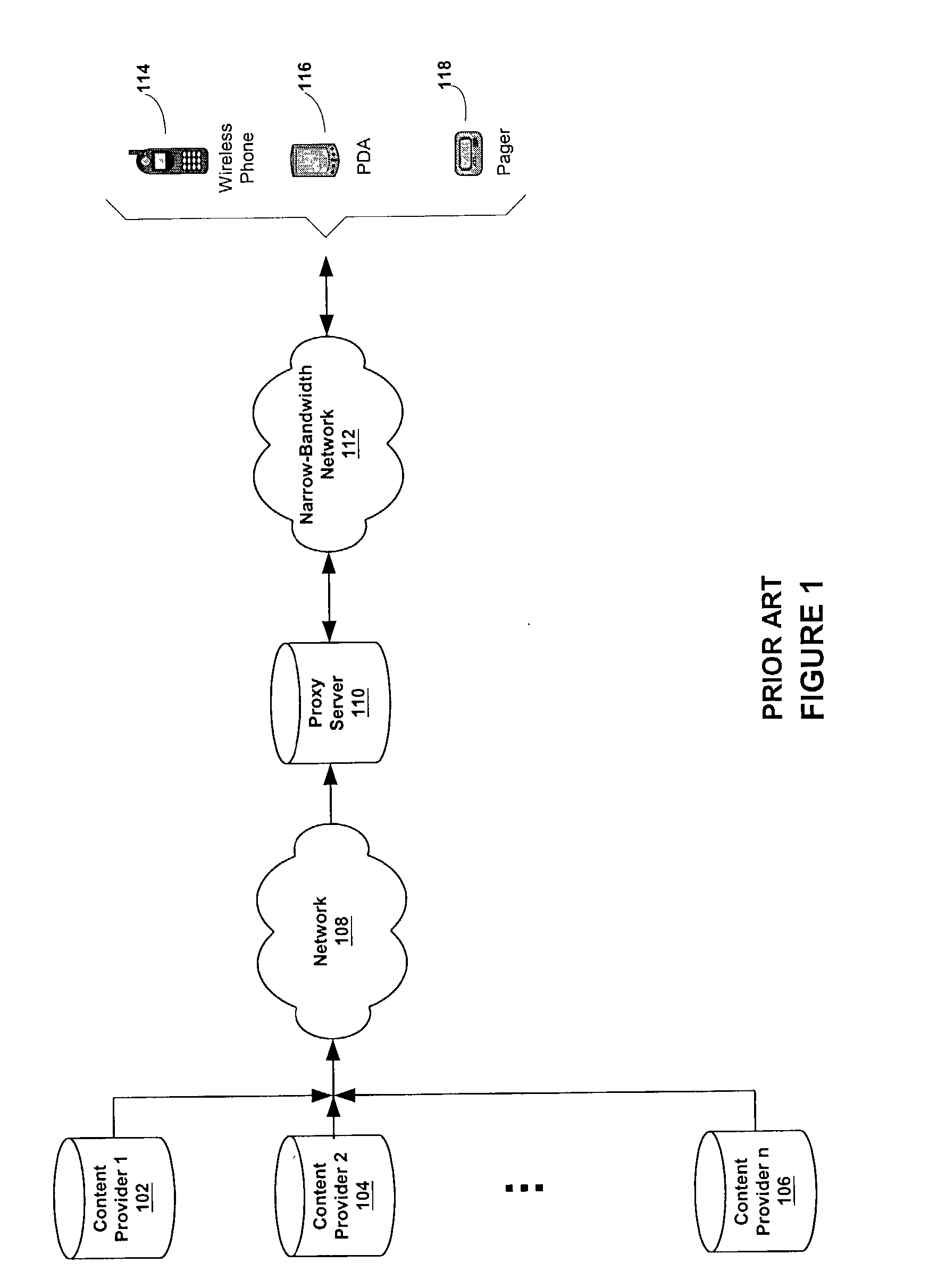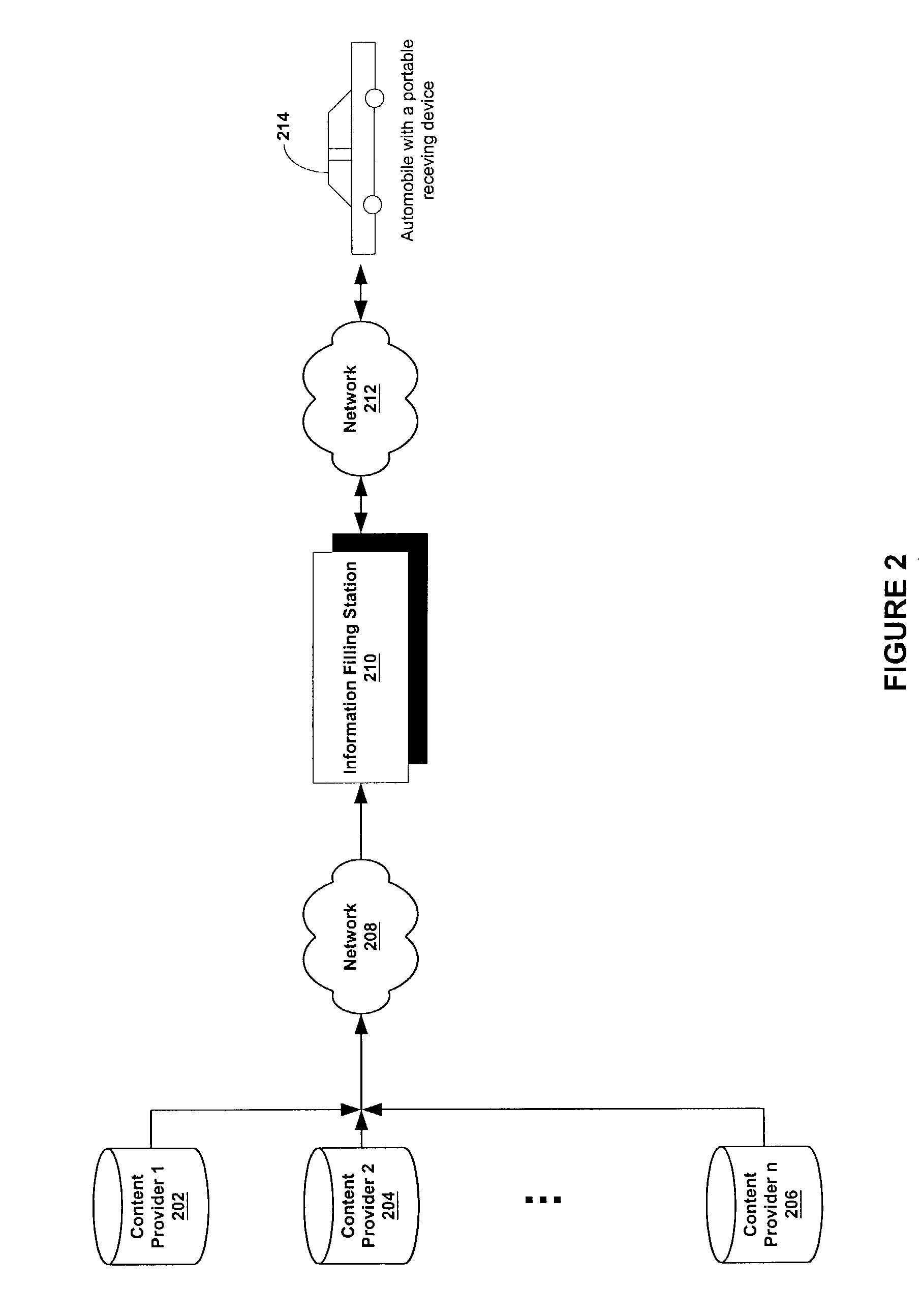Information filling station facilitating wireless transfer of data content to a portable device or other pre-defined locations
a filling station and data content technology, applied in the field of digital content providers, can solve the problems of limiting the size of data content to be transferred, the transmission rate as defined, and the limit of the size of data content that can be transferred in a given time period
- Summary
- Abstract
- Description
- Claims
- Application Information
AI Technical Summary
Problems solved by technology
Method used
Image
Examples
Embodiment Construction
[0080] In this example, a consumer with a portable computer-based device walks into a store and wirelessly connects to the store's local area network (LAN). Next, the consumer browses the products in the store and identifies a product of interest, such as an audio CD (or a DVD). Next, the consumer scans the barcode associated with the audio CD (or a DVD) using the portable computer-based device. Then, the consumer is given the option of sampling the content (either in part or its entirety) of the audio CD (or the DVD) for a limited number of times (e.g., the tracks can be listened to twice in its entirety or a clip of the movie can be watched twice). Based on the sampled content, consumers are able to decide if they are interested in purchasing a copy of the CD or DVD (either in a digital form or on a tangible medium such as a CD or DVD sent to a physical location). Additionally, users are also given the option of downloading such content with an expiration date. For example, a CD o...
PUM
 Login to View More
Login to View More Abstract
Description
Claims
Application Information
 Login to View More
Login to View More - R&D
- Intellectual Property
- Life Sciences
- Materials
- Tech Scout
- Unparalleled Data Quality
- Higher Quality Content
- 60% Fewer Hallucinations
Browse by: Latest US Patents, China's latest patents, Technical Efficacy Thesaurus, Application Domain, Technology Topic, Popular Technical Reports.
© 2025 PatSnap. All rights reserved.Legal|Privacy policy|Modern Slavery Act Transparency Statement|Sitemap|About US| Contact US: help@patsnap.com



